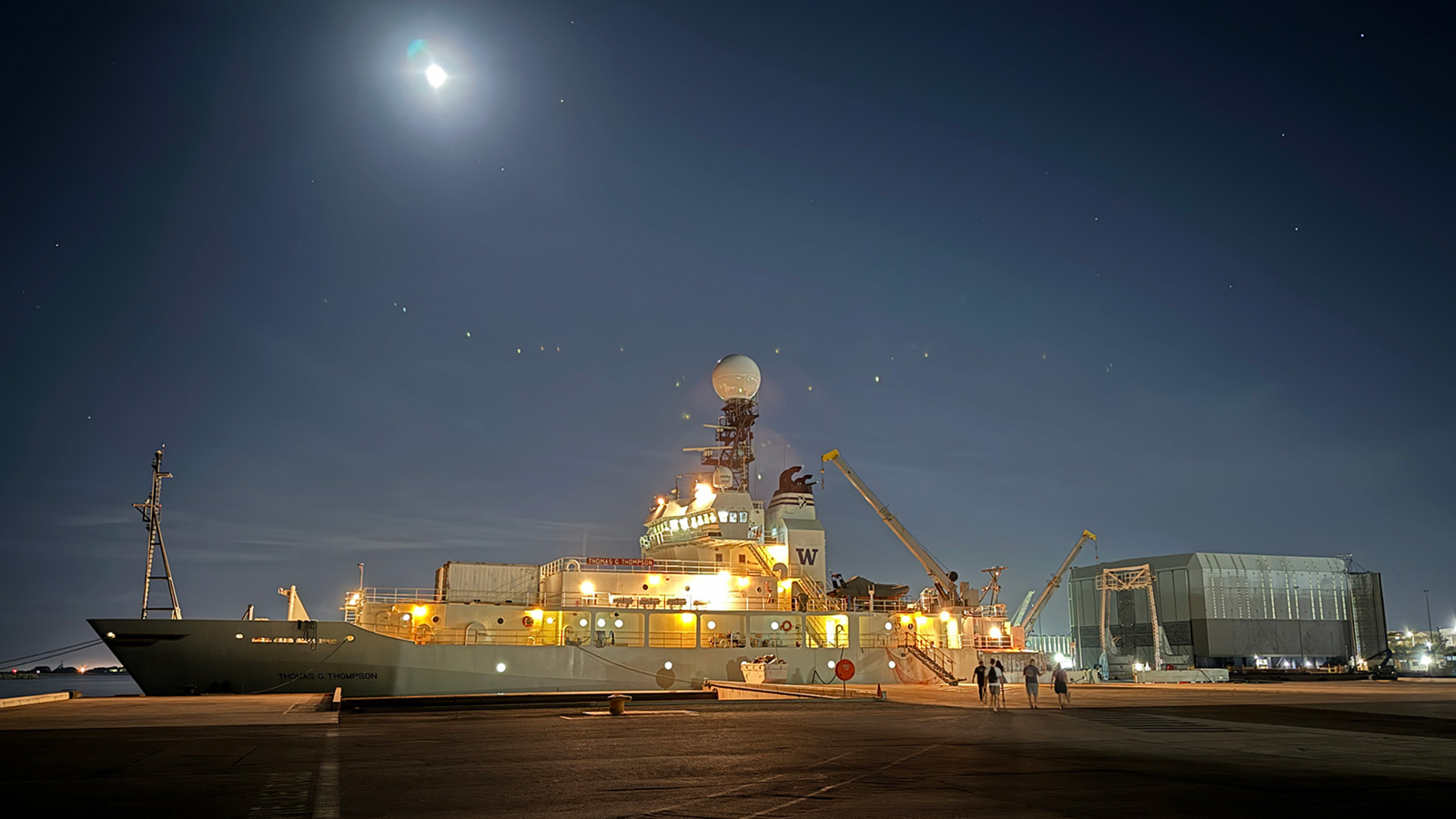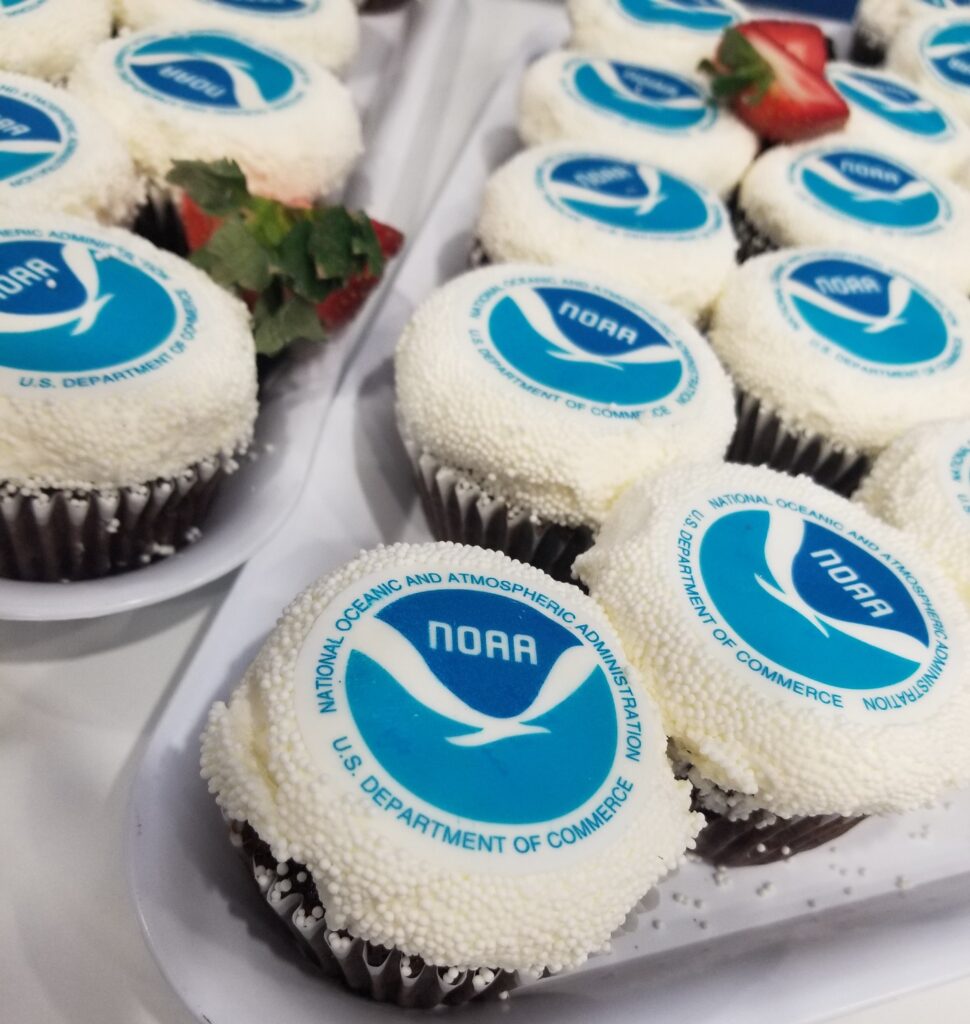This is a repost of NOAA AOML’s original story published May 2, 2024.
Floating ice, freezing temperatures, and streaks of lights in the night sky.
Traversing from Fremantle, Australia to Antarctica’s Prydz Bay and back again, the crew aboard the R/V Thomas G. Thompson successfully concluded the I08S GO-SHIP cruise on April 1, 2024.
Scientists at NOAA’s Atlantic Oceanographic and Meteorological Laboratory (AOML) and the Cooperative Institute for Marine and Atmospheric Sciences (CIMAS) co-led and participated in the nearly six-week cruise from Antarctica to the Indian Ocean led by the U.S. National Science Foundation (NSF).
With towering waves and days sequestered inside the galley playing cards, the crew proved resilient against incredible conditions to collect crucial oceanographic data from one of the most critical, yet difficult-to-reach regions of the world – the Antarctic. Keep reading to learn more about the cruise, the science, the people who made it possible, and what they saw – in 4, 3, 2, 1…
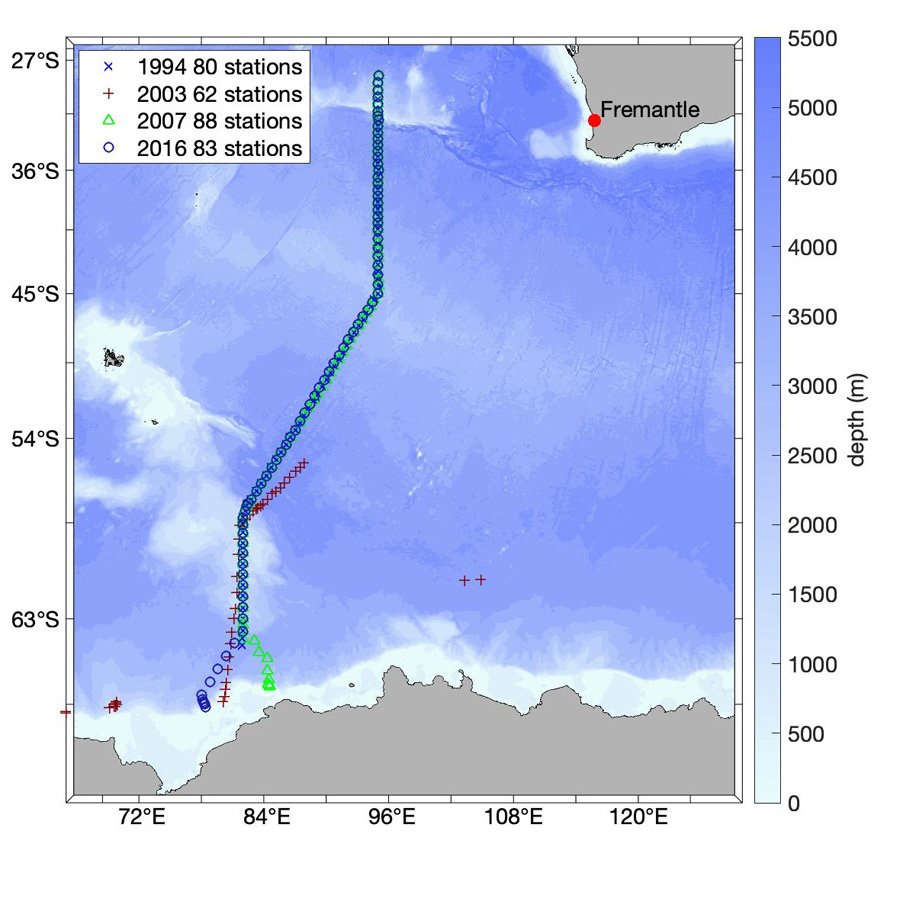
FOUR Occupations
This cruise marks only the fourth successful venture along the I08S transect, with previous cruises in 1994, 2007, and 2016. The I08S is one of 58 cruise tracks (i.e. “transects”) covering the Earth’s oceans where scientists decadally measure fluctuations in salinity, temperature, dissolved oxygen, inorganic carbon, and other key properties in ocean chemistry and physics from the surface to the seafloor as part of GO-SHIP.
Short for “Global Ocean Ship-based Hydrographic Investigations Program,” this international effort, funded by the U.S. NSF and NOAA, is fundamental for understanding heat transfer and carbon storage in ocean waters globally under a changing climate.

THREE Instruments
Along the I08S transect, scientists collected ocean data using three main instruments: conductivity, temperature, and depth (CTD) instruments, Argo floats, and surface drifters. CTD data were collected at 66 sites along the transect, measuring how temperature, salinity, and a suite of chemical properties change from the sea surface to the seabed. For the first time along the I08S, the team analyzed water samples collected by the CTD for environmental DNA (eDNA). AOML researcher and member of the I08S science party Rob Bremer said these data are important for “learning more about what role microbes are playing in the overall ecological and biogeochemical structure of the ocean.”
Fifteen Argo floats were deployed, which will allow for longer-term monitoring of physical, chemical and biological aspects of the ocean at a range of depths. Ten surface drifters were also deployed as part of NOAA’s Global Drifter Program, and will provide continuous measurements of sea surface temperature and atmospheric pressure across the Southern and Indian oceans.
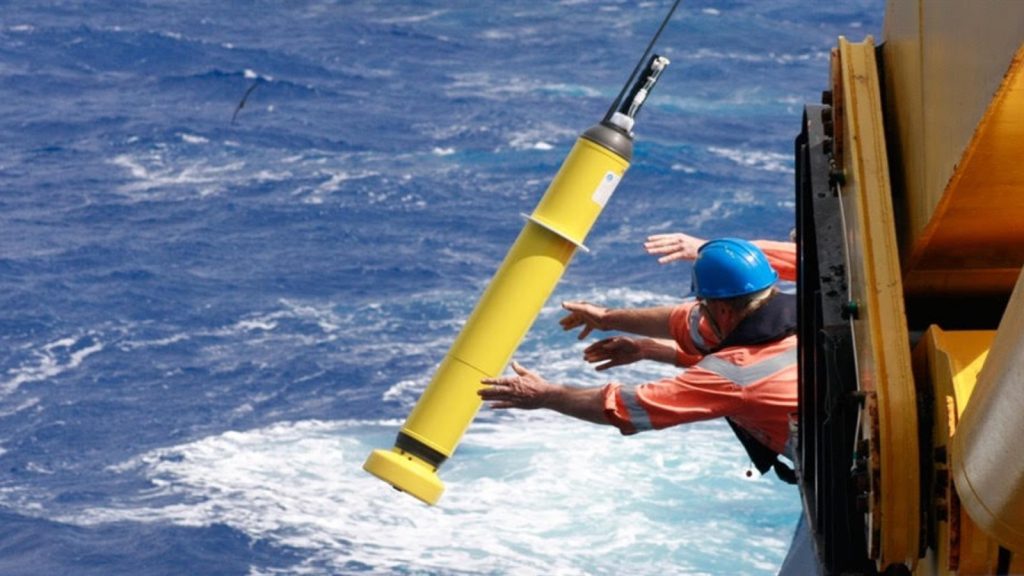


TWO Degrees Celsius
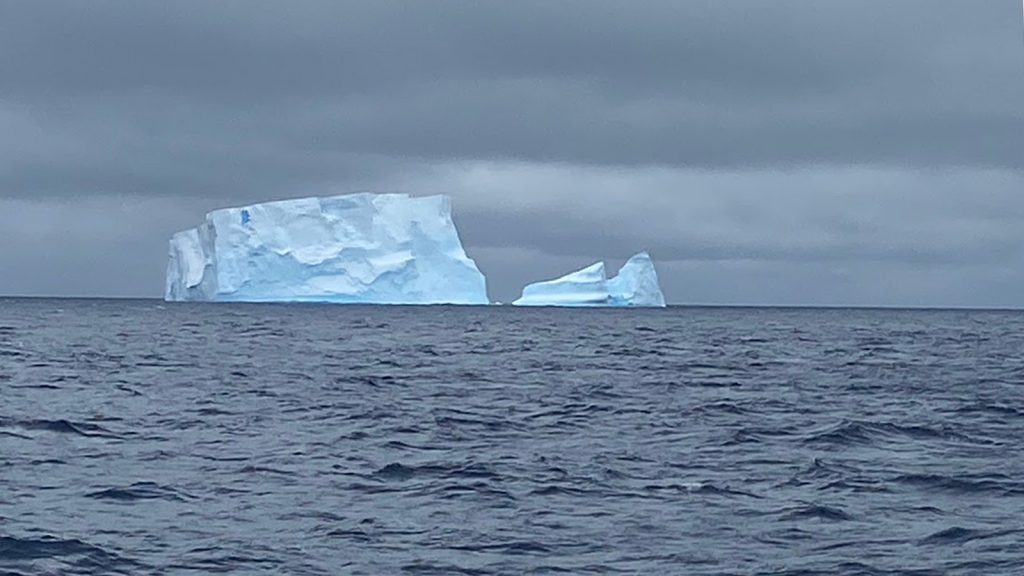
the ship approached Antarctica. Credit: Katelyn Schockman.
When first steaming towards Antarctica in the early weeks of the cruise, water temperatures dropped to two degrees Celsius, and Co-chief Scientist Katelyn Schockman, Ph.D., called out, “Ice on the starboard!” Icebergs appeared large on the horizon, but the research team was after even colder waters from the continental shelf in Prydz Bay, Antarctica.
Here, a unique water mass called Antarctic Bottom Water is produced, a critical component that drives ocean circulation across the planet. This cold, salty, dense water flows away from the Antarctic continent, where it mixes with warmer, fresher ocean water. Density-driven mixing of these waters transfers heat, moves nutrients, and contributes to the global conveyor belt of overturning ocean currents. By successfully sampling this water mass at its point of origin, researchers can now determine how it may have changed since it was last measured by GO-SHIP in 1994.
ONE
On April 1st, the I08S cruise came to a successful close. After almost six weeks of 12-hour shifts spent deploying instruments to the deep amid freezing temperatures, stormy seas, and blustery winds, the science party arrived at the docks in Fremantle, Australia, bidding farewell to their time at sea.
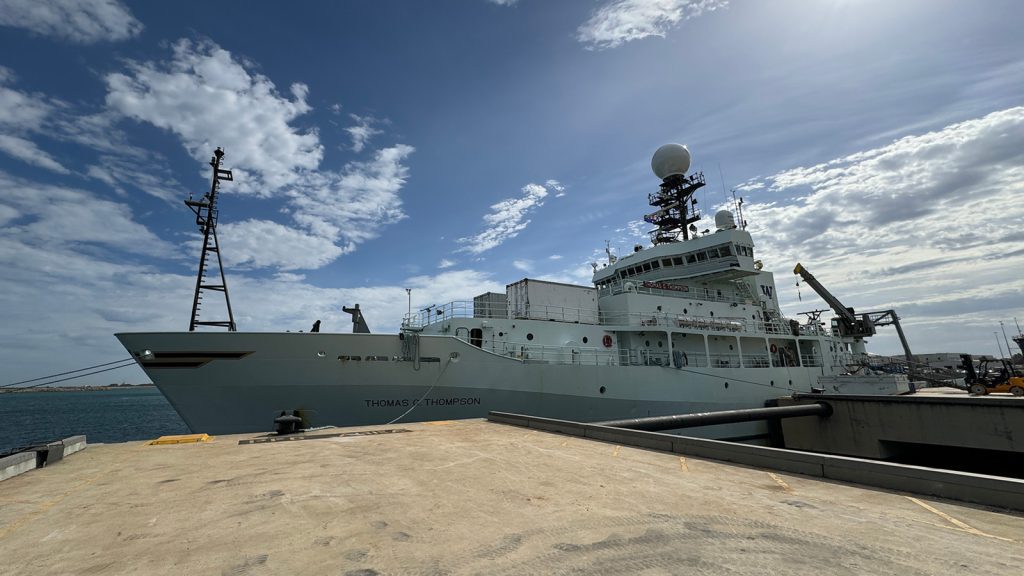
Credit: Jen Magnusson.
“I’m really proud of the high-quality scientific data we were able to collect on I08S despite the unrelenting weather conditions of the Southern Ocean. This was a difficult cruise and the scientists and crew of the Thompson should be commended for their efforts.”
– Katelyn Schockman, Co – Chief Scientist
The Southern Ocean is known for rough weather, with strong westerly winds. Sailors refer endearingly to the waters between 40 ºS and 50 ºS latitude as the “Roaring Forties,” and the legendary waves there dwarfed the 274-foot R/V Thomas G. Thompson. The crew masterfully endured the storms while covering miles of open ocean and collecting data that will unlock vast findings about how the ocean is impacted by climate change in one of the most remote regions of the world. Reaching the shelf of Antarctica is a feat to be celebrated – one with challenges and long days and nights of hard work but made worth it by the natural beauty of the Southern Ocean seen along the way.
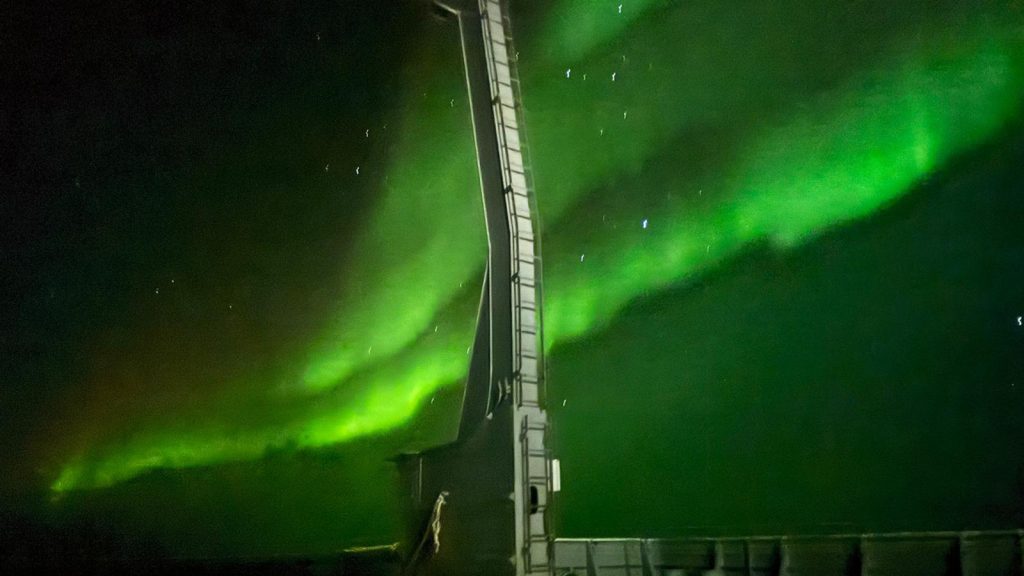
The I08S GO-SHIP cruise was funded by the U.S. National Science Foundation and the NOAA Global Ocean Monitoring and Observing program.
